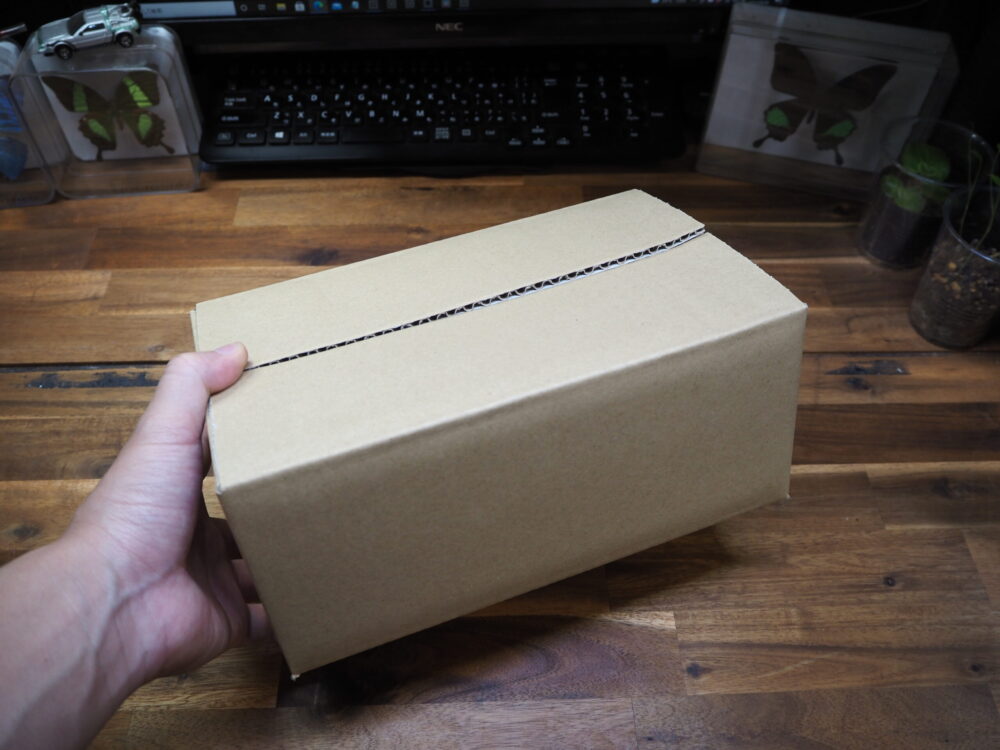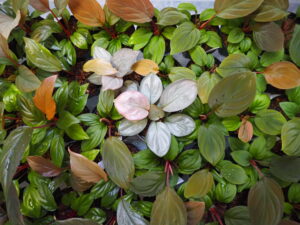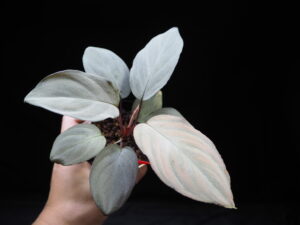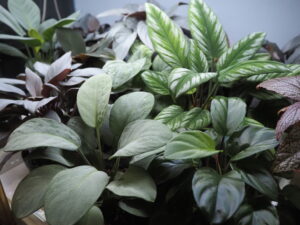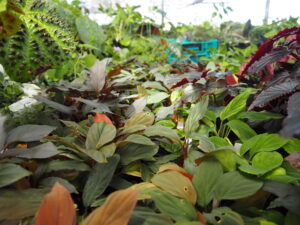How to cure plants that have no roots.
When you get your Homalomena, plant it in new, wet sphagnum and put it in a small bag. Then put the bag in a Clear container or an aquarium with a lid.
Root development is stimulated by light. Leaf growth is promoted by shadows.
Because Homalomena has large leaves, it will die if placed in a low humidity environment without roots.
Root development should be promoted first.
The light will be LED proof or other light used for tropical fish tanks. Using strong sunlight can be dangerous as it may cause the temperature to rise too high.
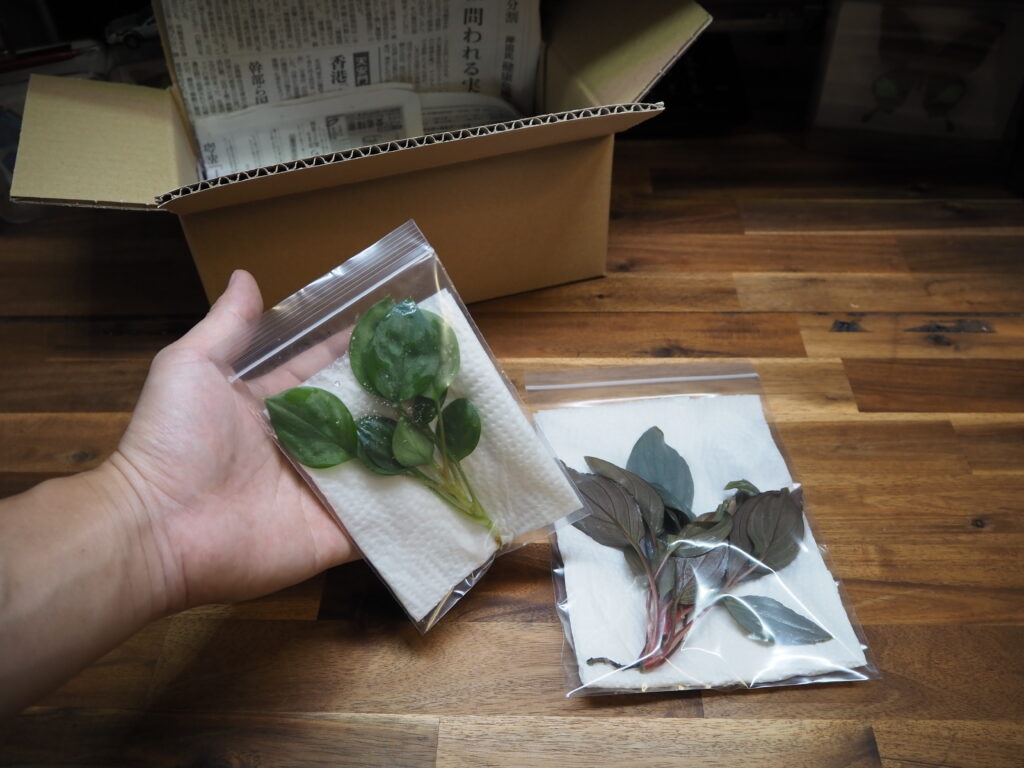
Homalomena sent from me to the U.S. arrives in such a state.
The roots have been cut off according to USDA import regulations.
If the leaves are tender when opened, place them in water as shown in the photo; they will recover in about an hour.
If the leaves are hard when you open the package, you can skip this step.
Prepare new sphagnum.
It is best to avoid old ones as they can cause problems.
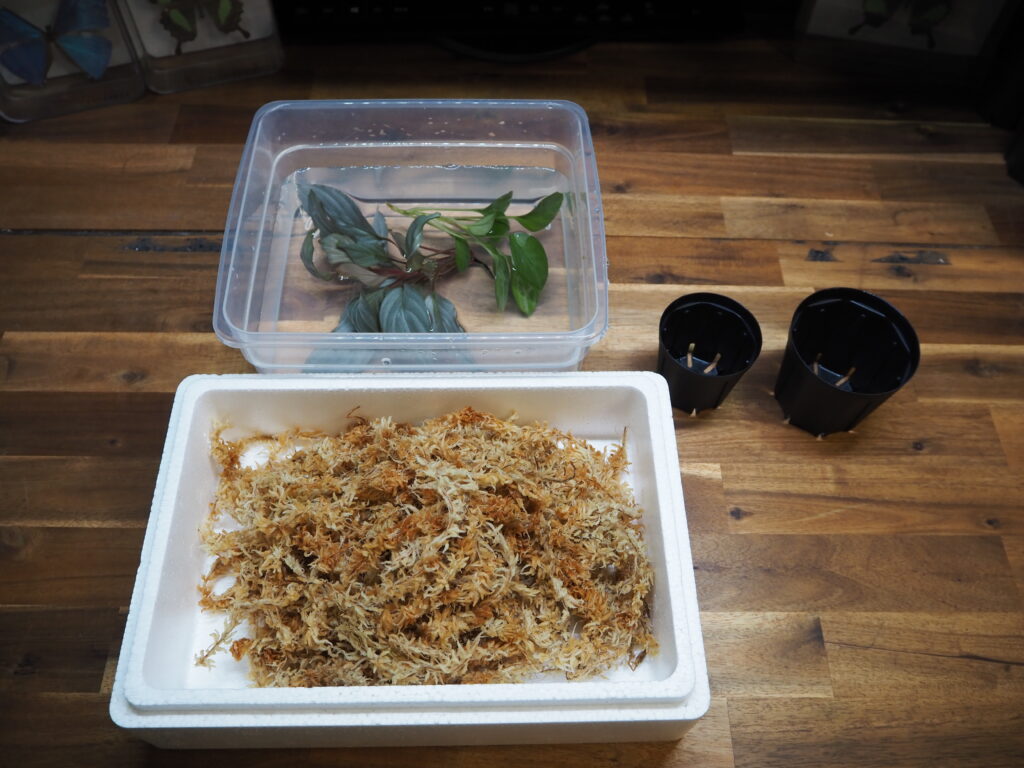
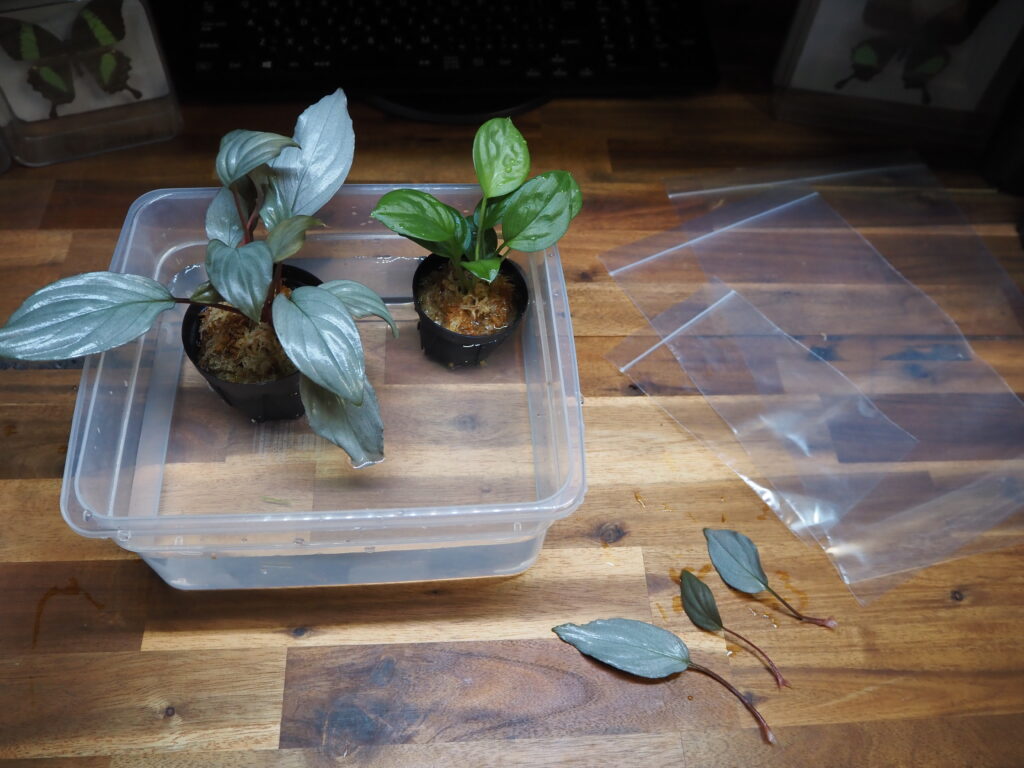
Plant it in an appropriately sized flowerpot.
The moss will then be completely wet.
At this time, if there is not enough water in the sphagnum , Homalomena will wilt in a few hours.
When planting, it is best to remove any damaged or misshapen leaves.
Pruning them beforehand will give them a better overall shape when they grow.
Prepare a bag of appropriate size.
The smaller the bag, the better.
Cover the plant pot or place it inside the bag as shown in the photo.
This process is very important to promote rooting and to keep the leaves clean.
In the bag, place the leaves in an upward position.
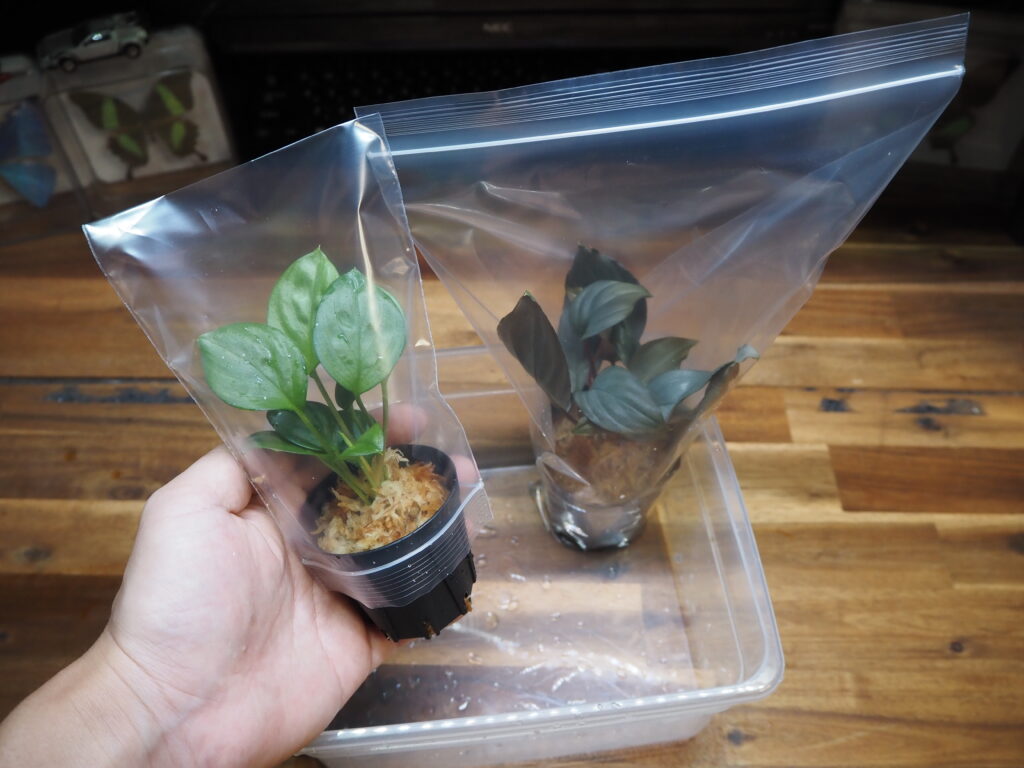
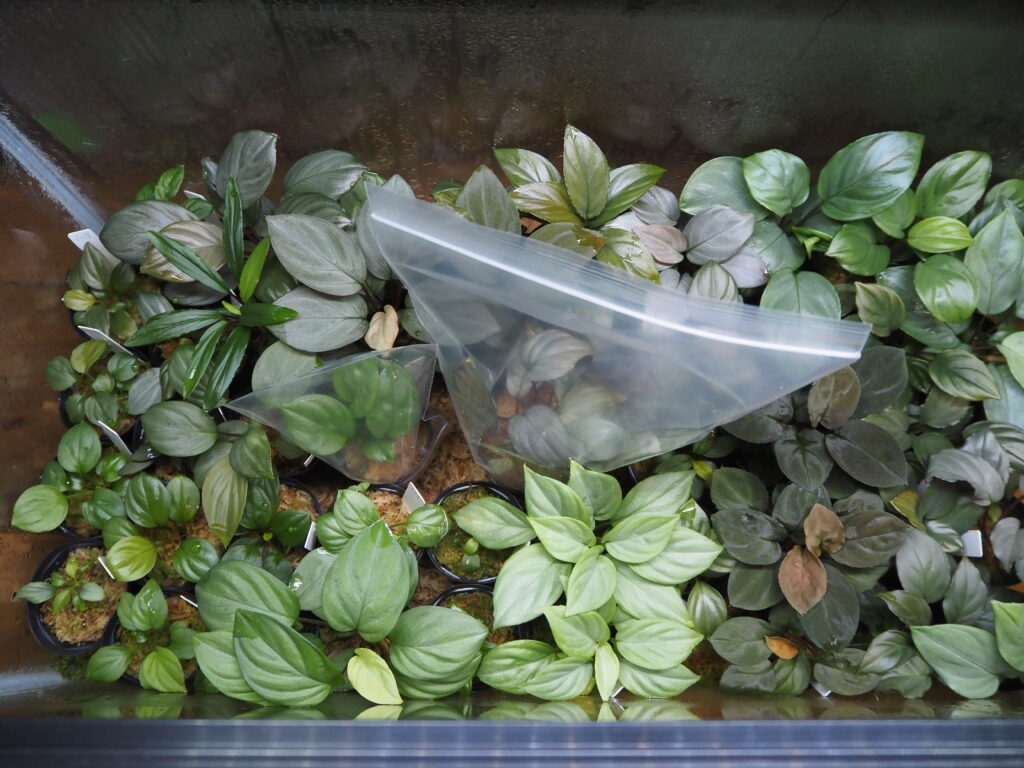
Place them further inside the container while still in the bag.
At this point, I tend to get better results in an environment with lots of plants around than in a box with nothing in it. I do not know why.
Perhaps the humidity is stable.
The roots of the plant are stimulated to grow by dryness and light.
However, if the plant has no roots at all, it will die instantly when it dries out, so please give it light.
I use general LED lighting.
You can use sunlight or other lighting if you can keep the light level appropriate.
In my growing environment, the roots will develop fully after about two weeks in this condition. However, people have their own growing environments, so the period of sufficient growth is not constant.
Use these tips to help you train your precious plants.
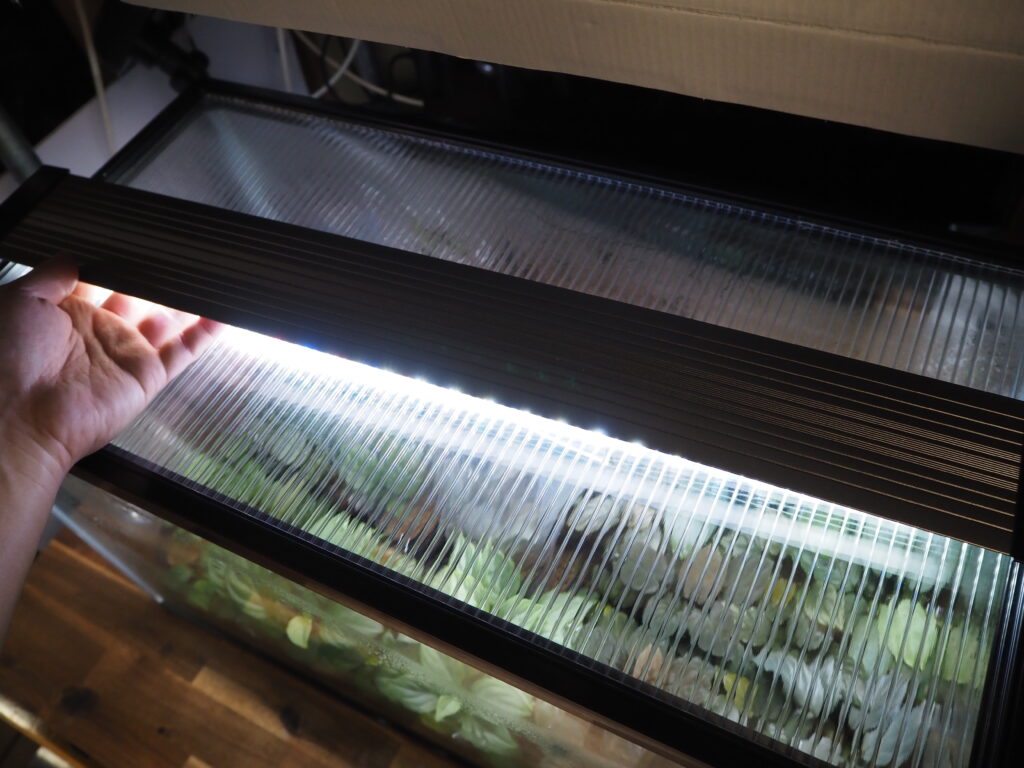
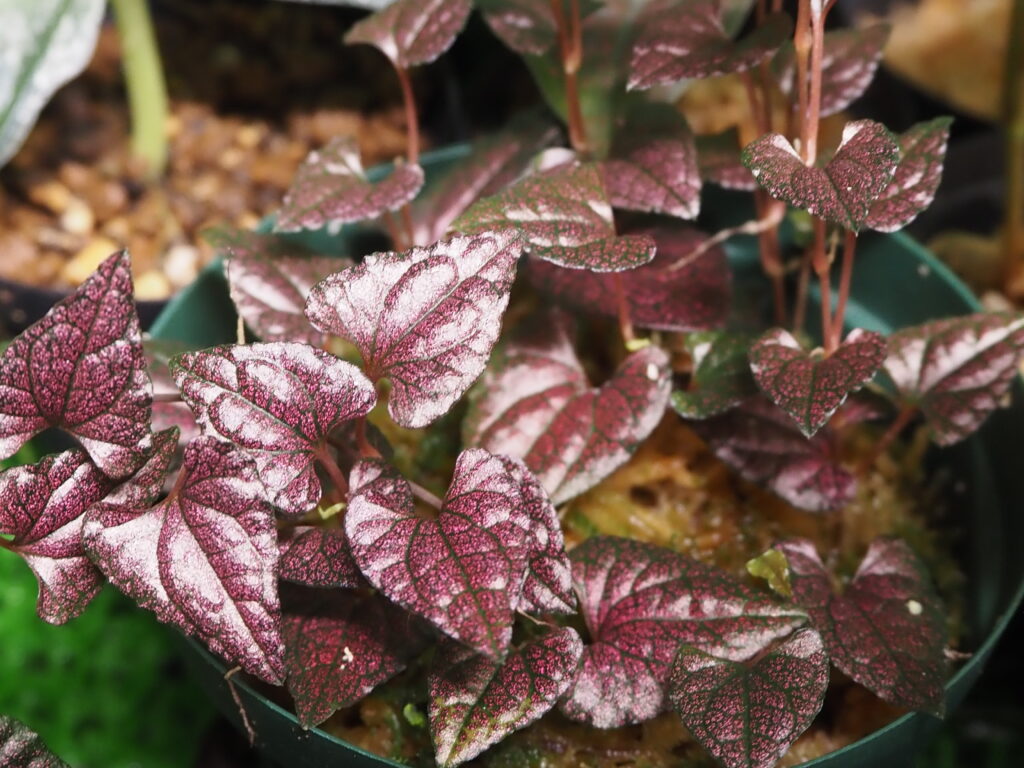
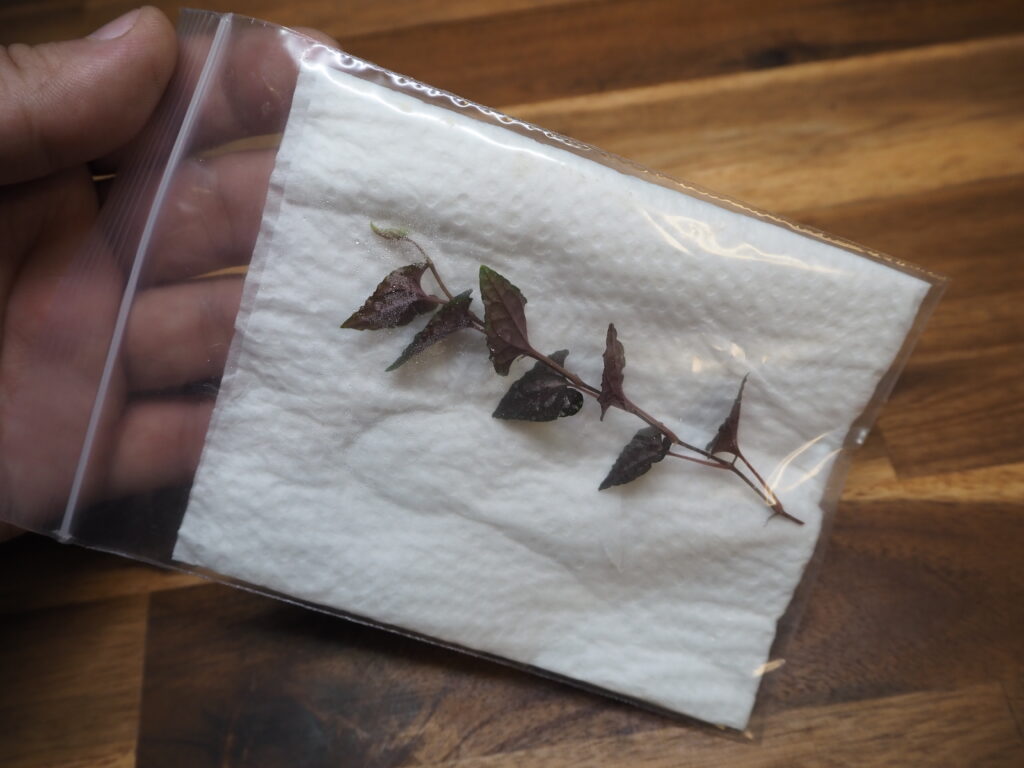
How to introduce Piper and other climbing plants
If long plants are planted standing upright in flowerpots, it is difficult to supply water to the growing point.
Initially, the environment must be set up so that the entire body does not lack moisture.
Many types of climbing plants are basically very hardy.
If the plants you get are short or long, the procedure can be different.
The plants should be floated in water after arrival to keep them in good shape.
Just as in the Homalomena procedure.
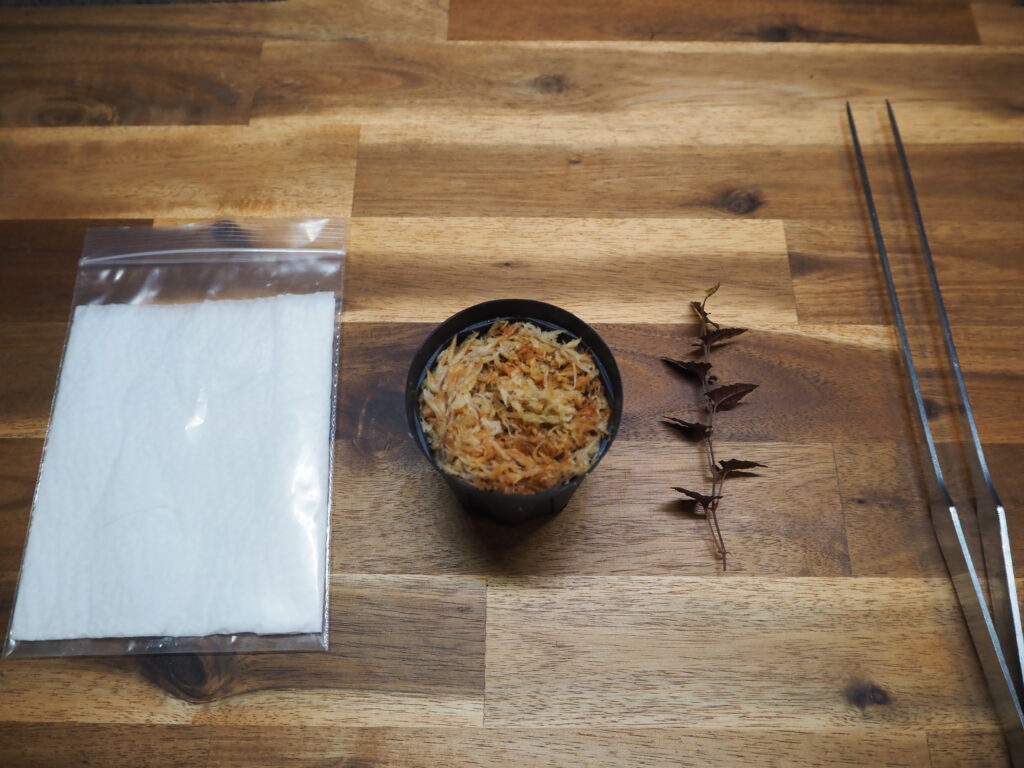
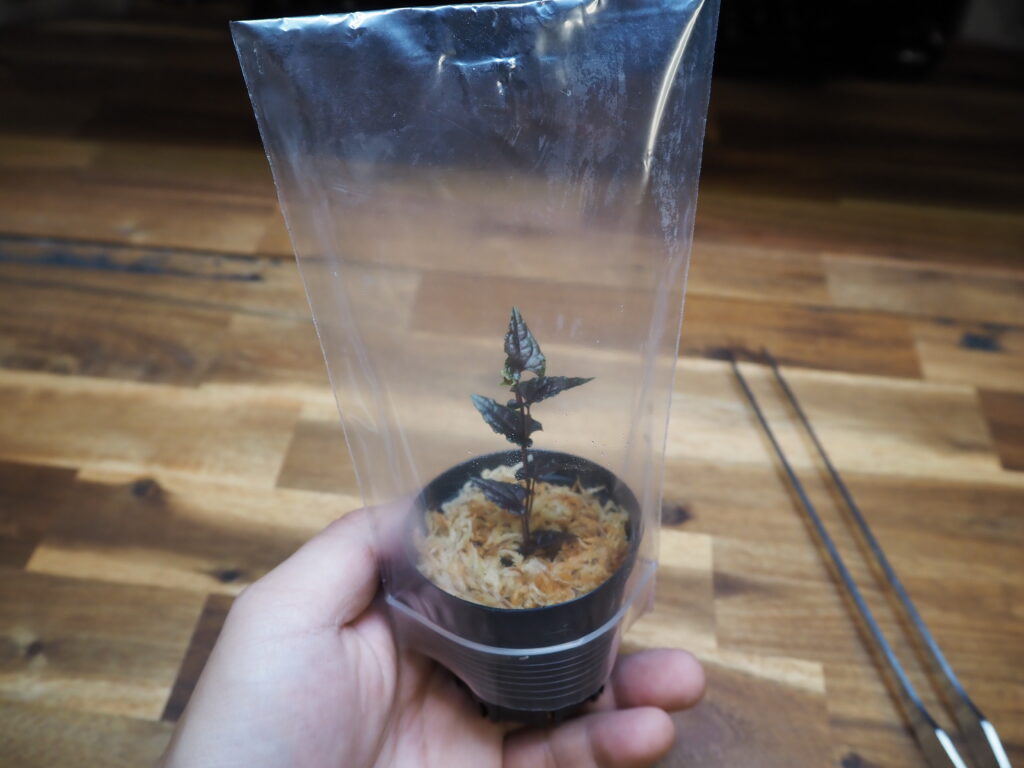
If the plants you get are short, you can generally get away with simply planting them deep and covering them with a small bag.
Place them in a humid box in this condition to encourage rooting.
If the plant is a bit long, set it up in such a way that the moss will contact the entire stem.
At this point, the plant can be in a vertical or horizontal position.
The main point is that there should not be a lack of water until rooting starts.
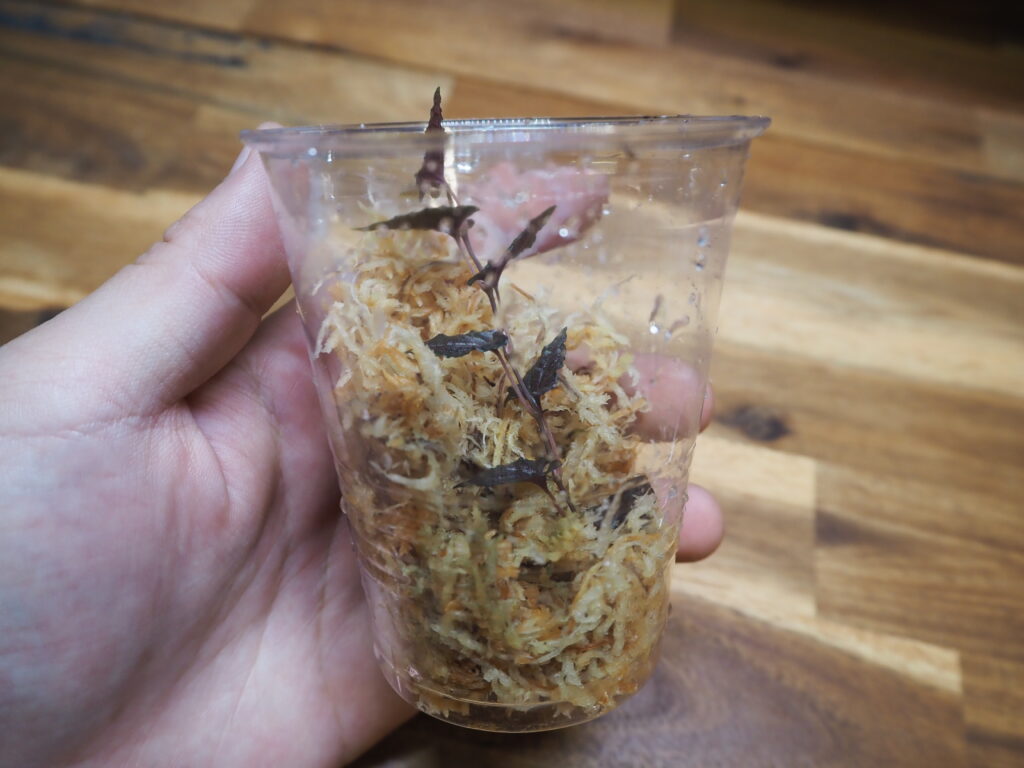
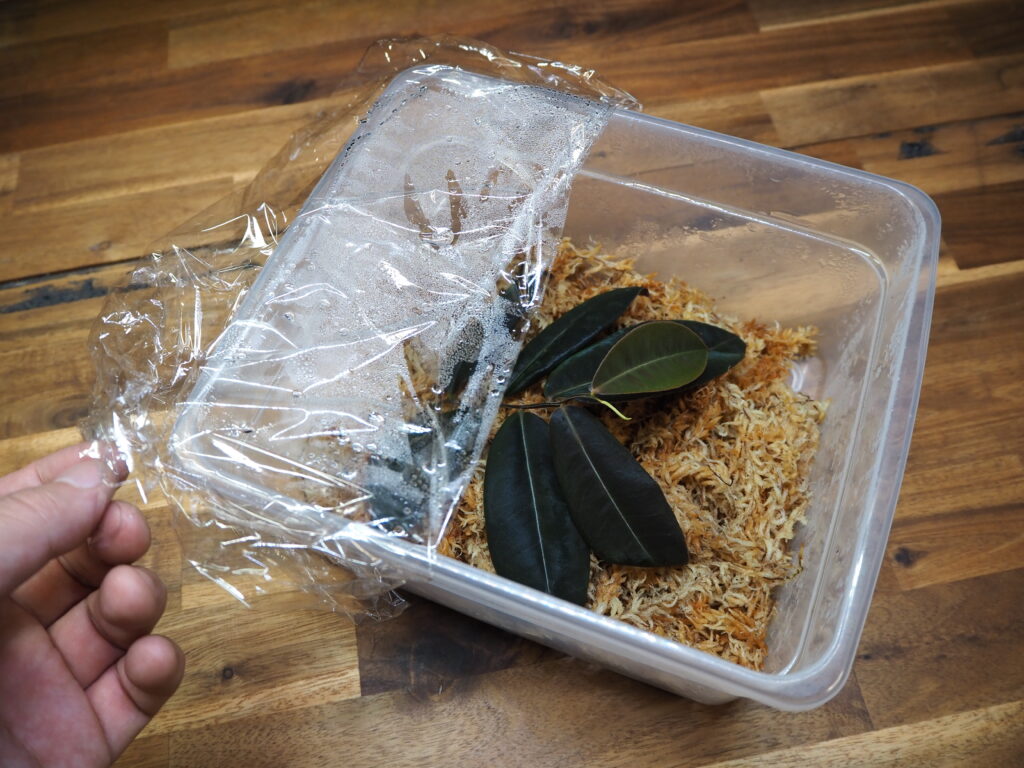
If you get an even longer plant, you can use a small box where the entire plant can be placed horizontally.
When the roots have developed to a certain extent, you can move the plant to a flowerpot of your choice.
For long, tender plants, you can also cut them into sections and plant them one at a time.
This method is less prone to moisture deficiency since only one leaf will be attached.
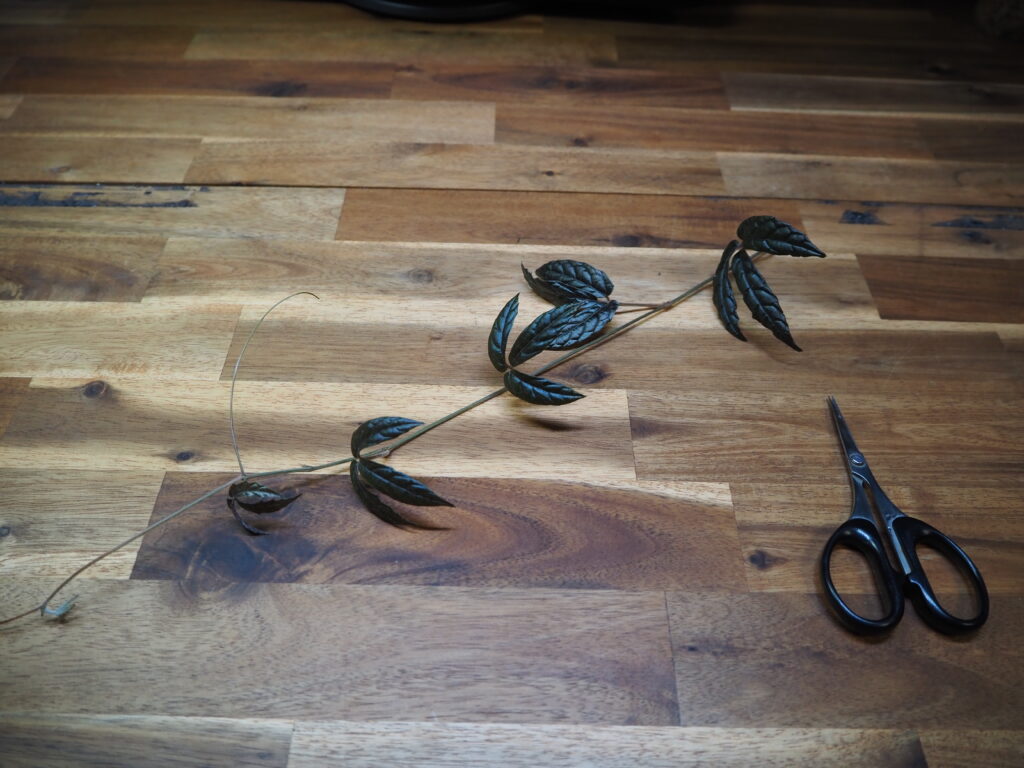
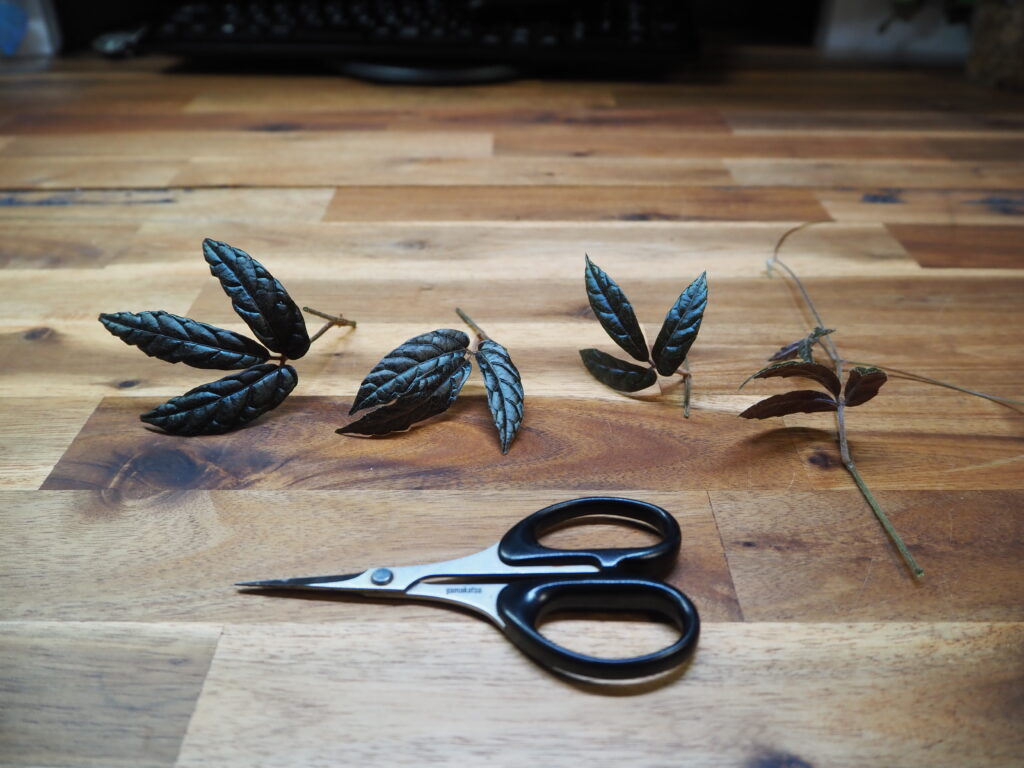
You can cut it into pieces as shown in the picture.
Depending on the type of plant, multiple shoots may develop from a single leaf.
If you continue to grow it in a humid place, it will grow new shoots that are suitable for that environment.
Plants grow faster when the humidity is high.
If the humidity is low, it will grow slowly.
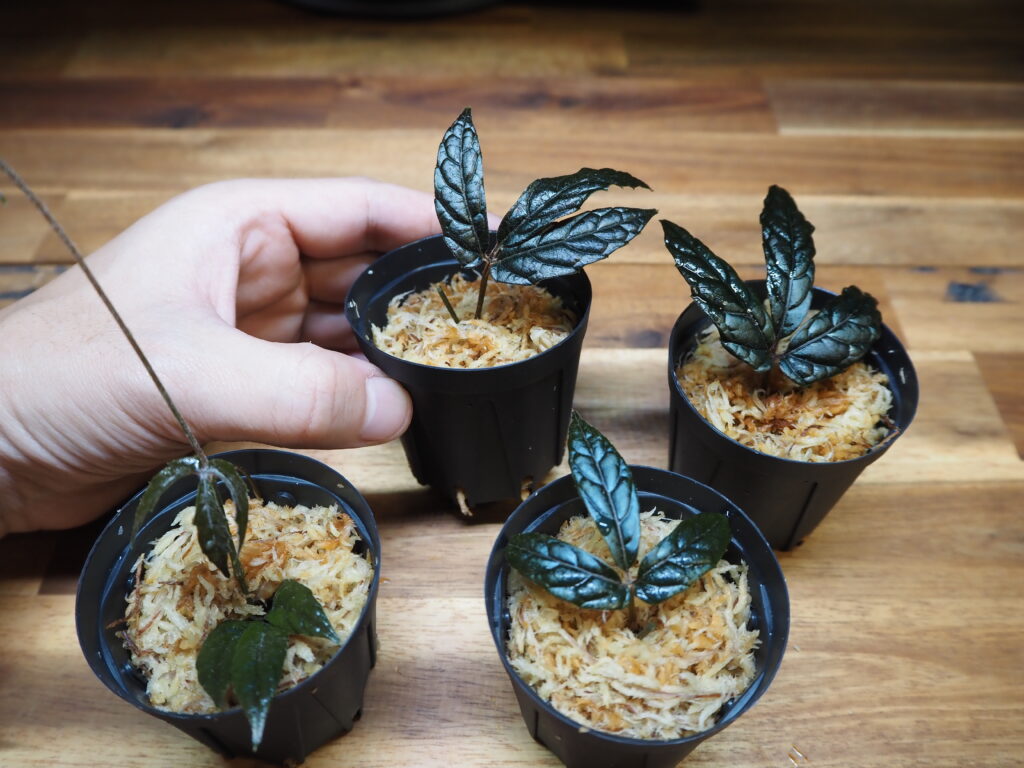

This was grown in a humid environment for about two weeks.
Very pretty.
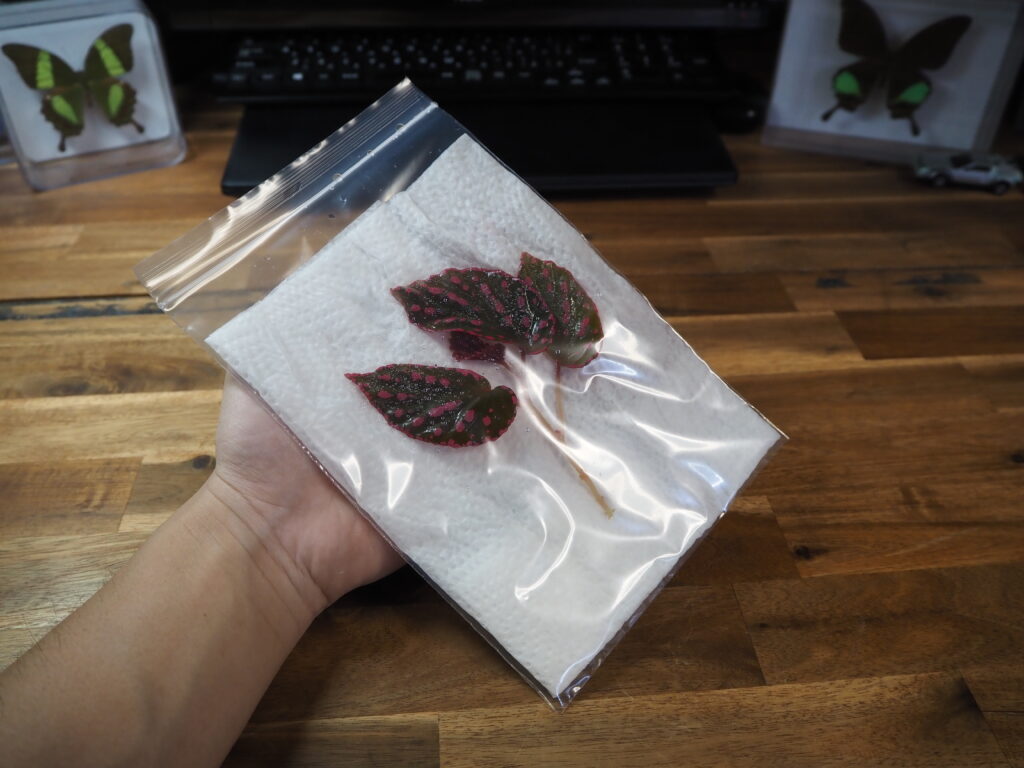
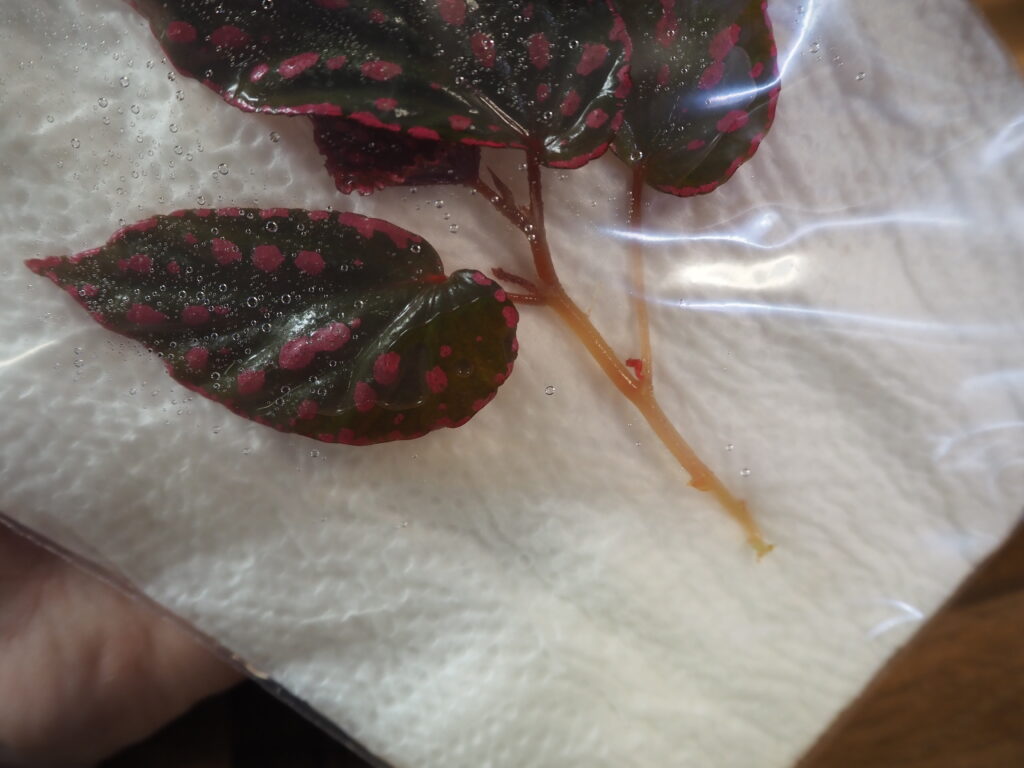
Begonia arrives in this state.
The roots are completely excised and in a cut branch.
The following is a description of how to recover from this condition.
After removing it from the bag, float it in water for 30 minutes to an hour to supply water to the body.
At this time, you may use a plant fungicide.
(They are already disinfected when shipped.)
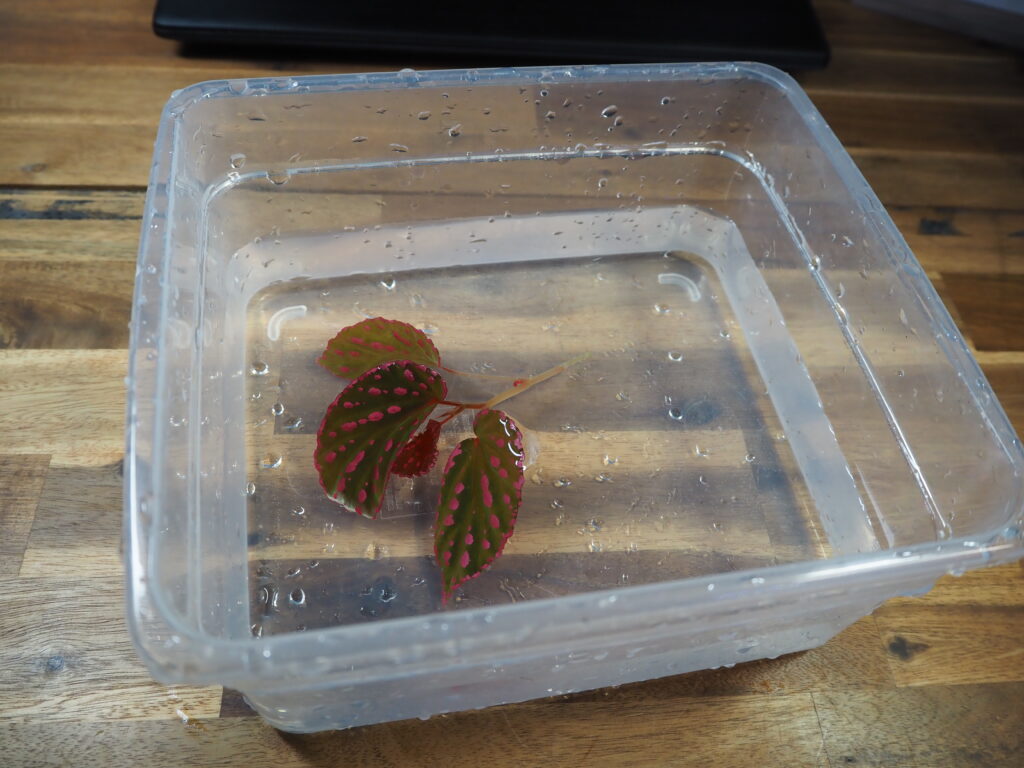
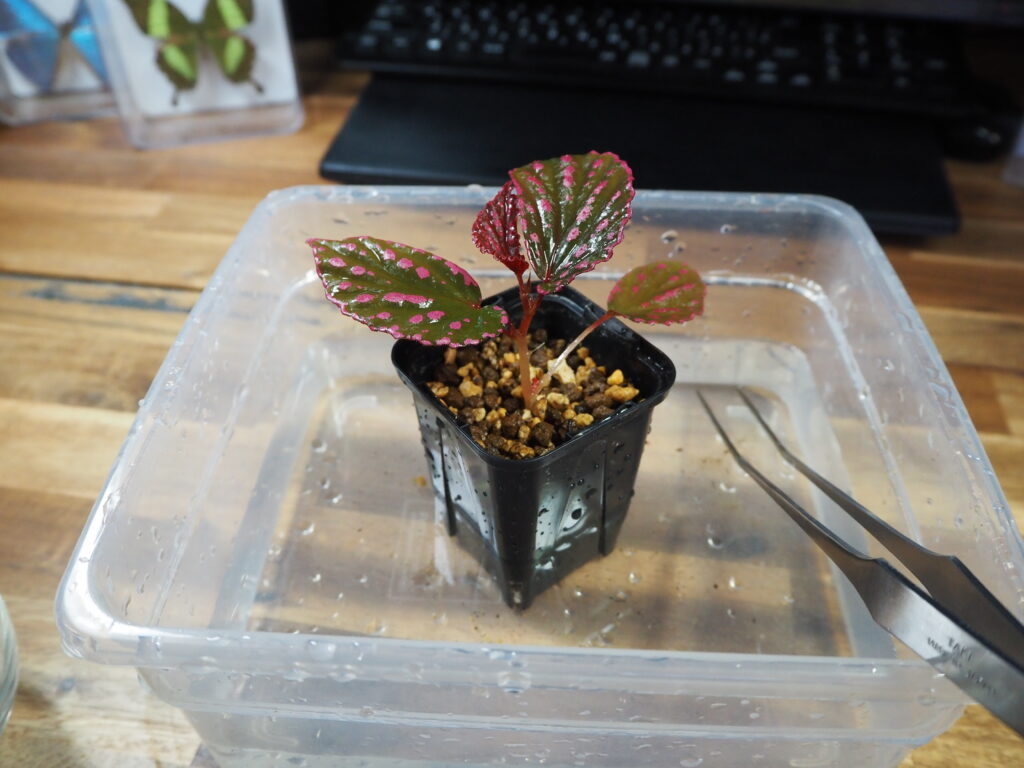
Plant in soil or sphagnum.
When using soil, many people have had good results using only Akadama soil, but many people have also had good results mixing perlite.
Wet the inside of the pot completely.
Plants without roots are very sensitive to lack of water.
They need to be kept in small containers to maintain the humidity in the air.
You can also confine them in a bag as shown in the picture.
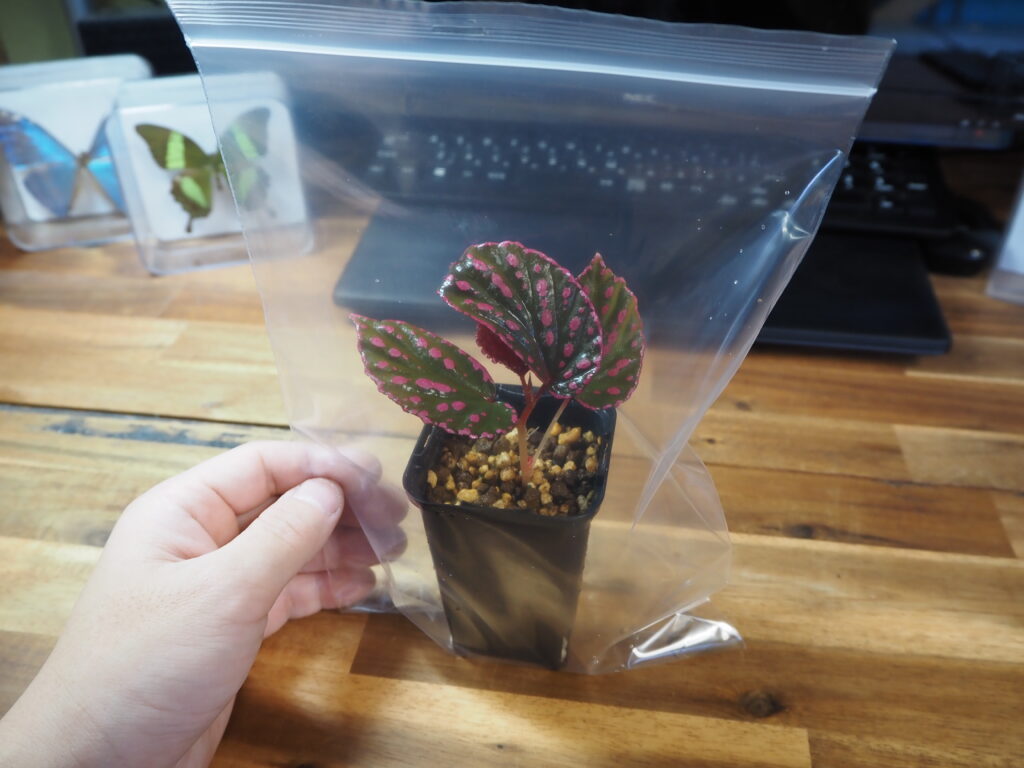
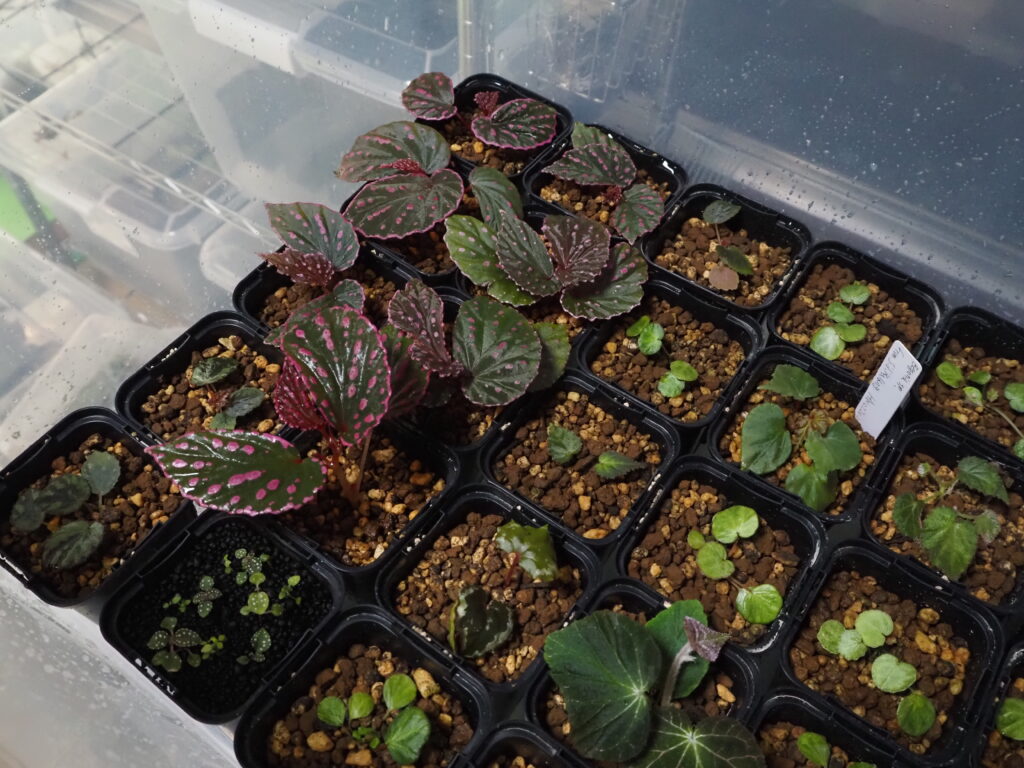
Alternatively, you can keep them in a box with many plants in it. Store a little water at the bottom of the box.
This method is not suitable if the place where the box is placed is dry.
Place it in a bright place. In a dark place, it may lose its strength before it can recover.
However, if it is too bright, it may wilt.
I think people have their own way of doing things. The method I am describing may not be perfectly reproducible by everyone. There are still many things I do not understand.

